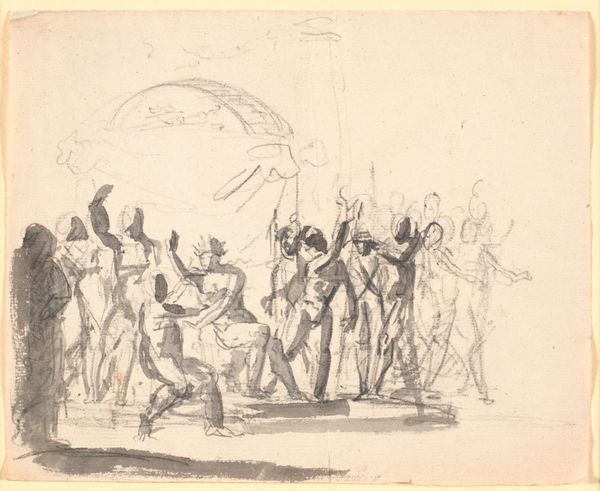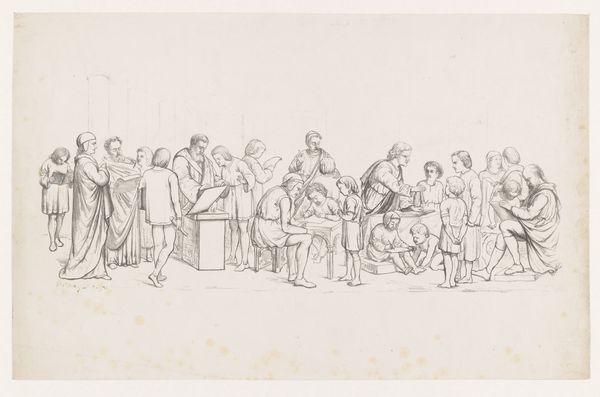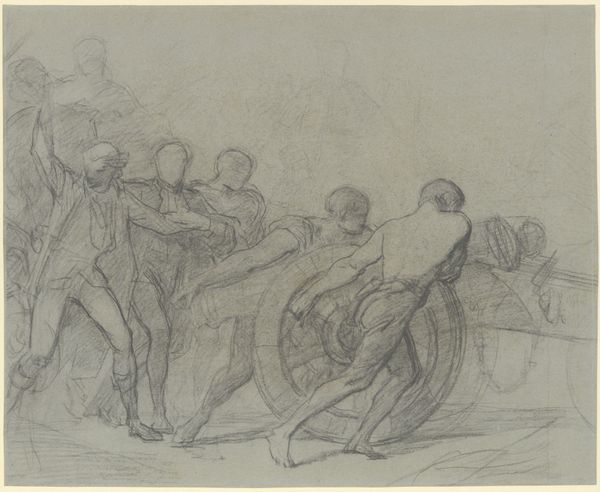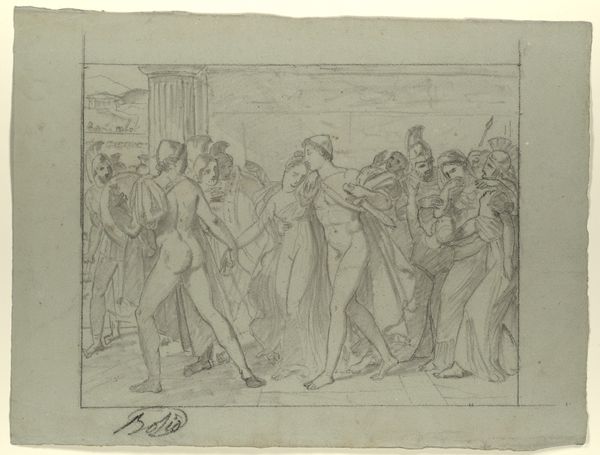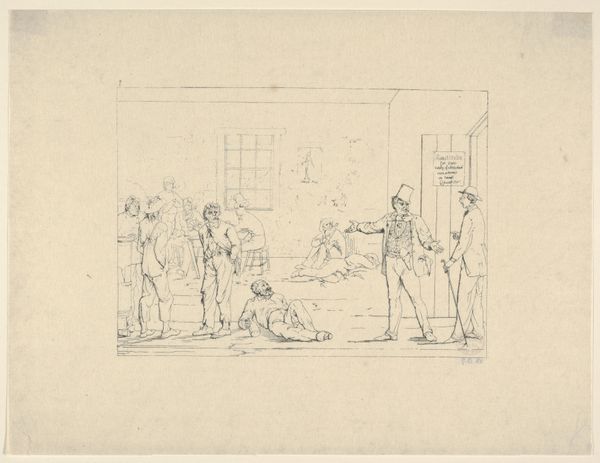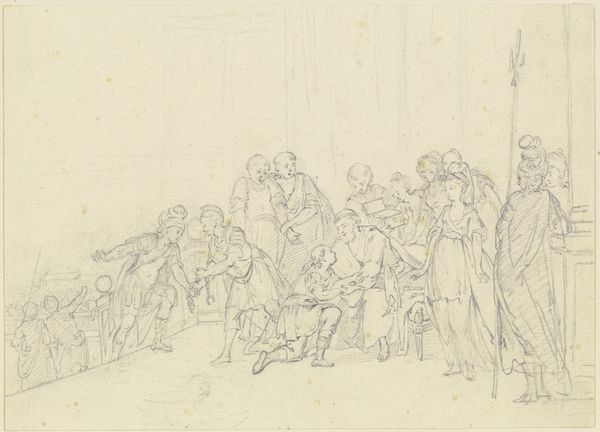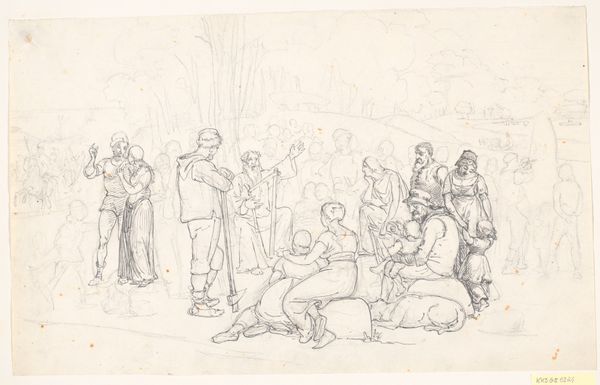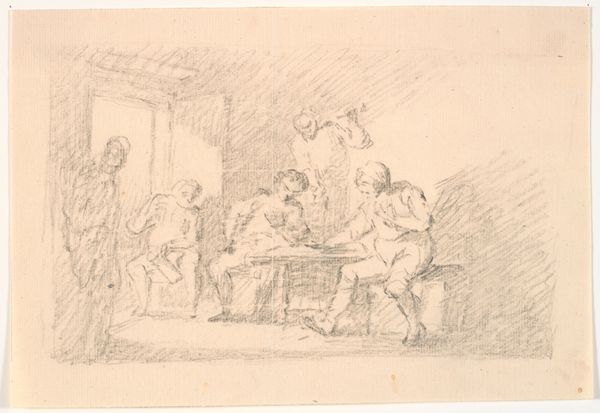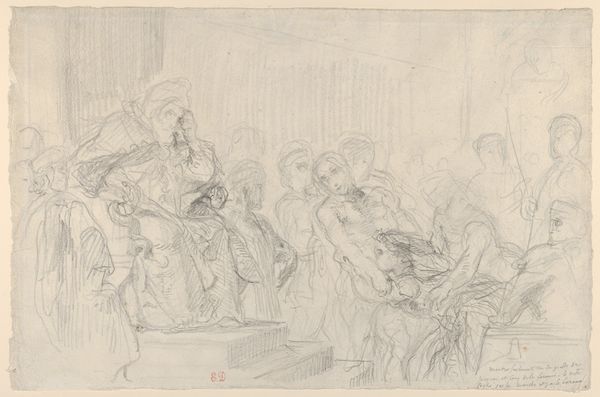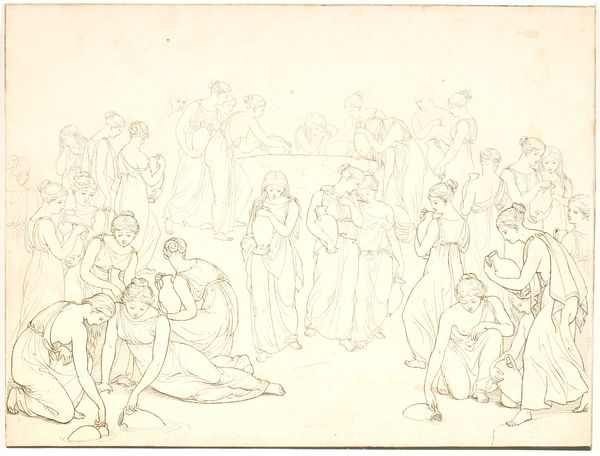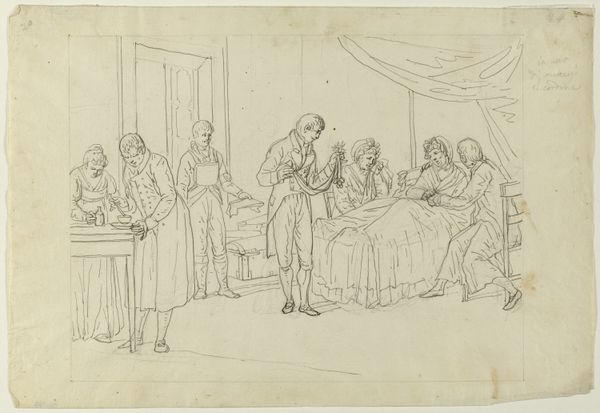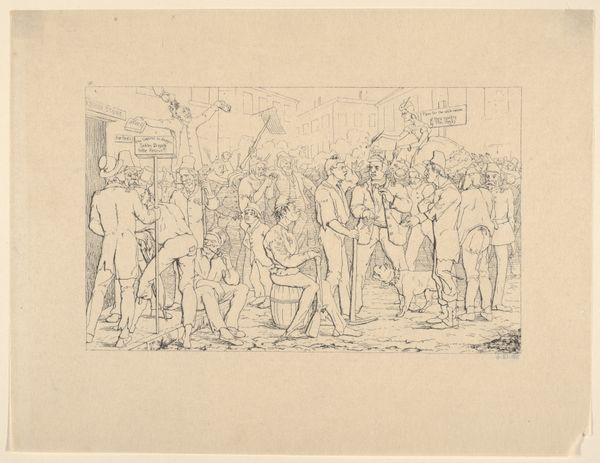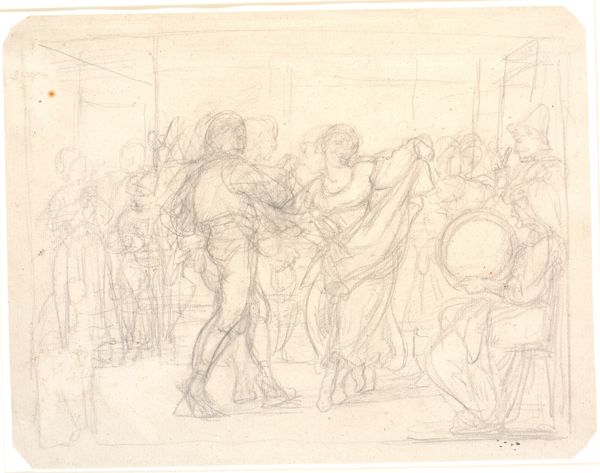
drawing, pencil
#
drawing
#
neoclacissism
#
figuration
#
pencil
#
history-painting
Dimensions: sheet: 28.5 x 39.3 cm (11 1/4 x 15 1/2 in.)
Copyright: National Gallery of Art: CC0 1.0
Curator: Let’s delve into Jean-Claude Naigeon’s pencil drawing, "Timoleon Thanked by the Citizens of Syracuse," circa 1790. The initial impression it makes on me is how subdued the triumphant scene seems, even muted by the use of pencil on paper, don't you think? Editor: Absolutely. The subdued medium almost serves to flatten the narrative, highlighting instead the historical implications and the very performance of civic gratitude on display. It makes me think of the intersection between power, gender and class structures present within Neoclassical art's vision of citizenship. Curator: Precisely! The use of graphite implies an immediacy of process – we get to witness, rather than a finished piece, the bare-bones structure upon which histories are made, uncolored, almost as an early stage of production itself. Note, for example, the labor of constructing heroic narratives and, even, deconstructing their making visible through the sketching process itself. Editor: Yes, and it forces us to question the inherent biases present in history paintings. Timoleon, a Corinthian general, is celebrated for liberating Syracuse. But at what cost, and whose stories are sidelined in the process of immortalizing him? Who manufactured his robes, weapons, and monuments to solidify his position in popular collective memory, who erased their names to sanctify him. Curator: Right. And even though it is a mere drawing, this serves as a monument; it does a kind of preparatory work for creating a cultural idea. Here, Timoleon is centered but also, simultaneously, presented with a softness – as an incomplete thing, subject to constant refinement as we keep telling the story. You notice that the production seems frail even at this historical distance. Editor: The drawing highlights power dynamics—how citizenship itself was historically limited by race, gender, and class. The drawing as a manufactured good asks if there is resistance to prescribed values of a political and art historical tradition to legitimize certain hegemonies while subverting others. Curator: That’s it. A piece about thanking becomes about unpacking the conditions under which thanks become yet another system that shapes what gets made, valued and remembered through objects like this. Editor: Well, looking at this work from Naigeon has indeed been an excavation rather than an observation. Thanks for shedding light!
Comments
No comments
Be the first to comment and join the conversation on the ultimate creative platform.

